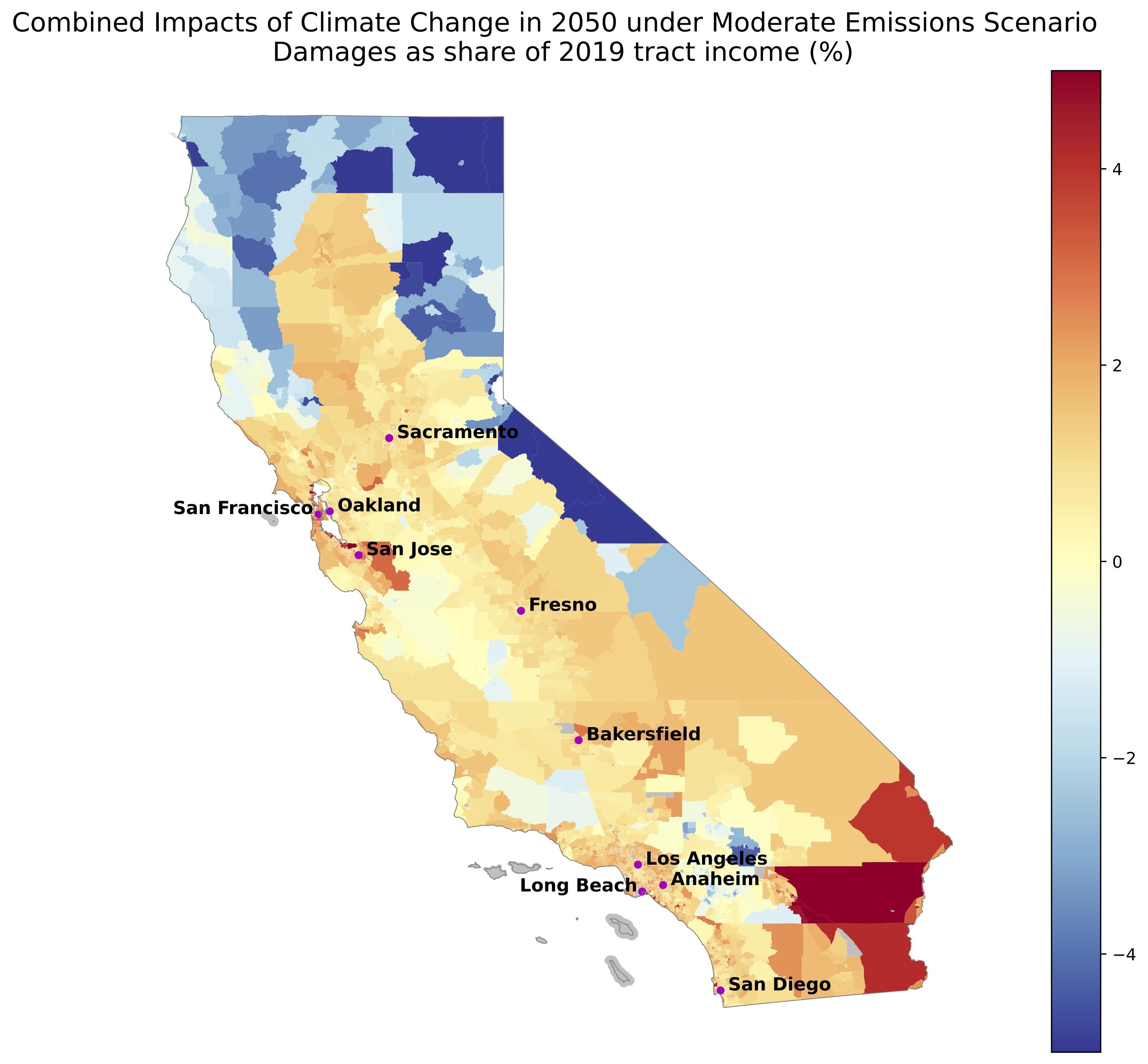About
Evidence continues to mount that California’s climate is rapidly changing. Greenhouse gas emissions are increasing temperatures, changing precipitation patterns, and contributing to rising sea levels, creating physical hazards throughout the state. Advances in data and economic research over the last decade have dramatically expanded knowledge of the links between these physical hazards and their impacts on human welfare. A number of these new, empirically grounded studies make it possible to quantify the costs of current and anticipated climate impacts at a local level. This climate economics research can then be used to identify geographic regions and populations that face disproportionate climate risk.
Drawing on this research, this project seeks to quantify impacts of climate change on communities across California. In particular, we aim to identify geographic regions of the State that face disproportionate impacts from climate change by developing a comprehensive measure of vulnerability, the climate vulnerability metric (CVM). The CVM will ultimately help researchers, policymakers, and individuals better assess local-level climate risk and mitigate climate inequities across the State.


